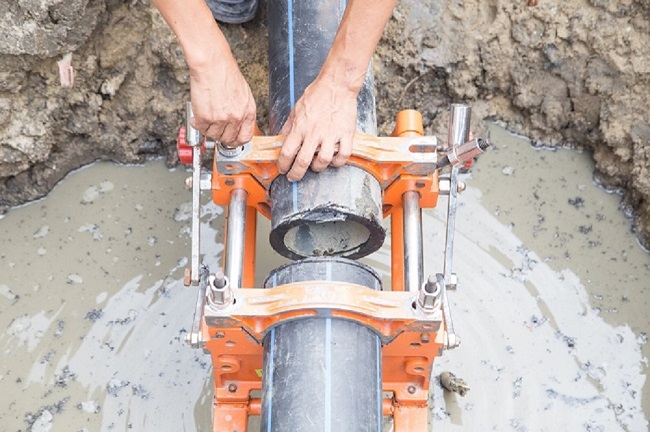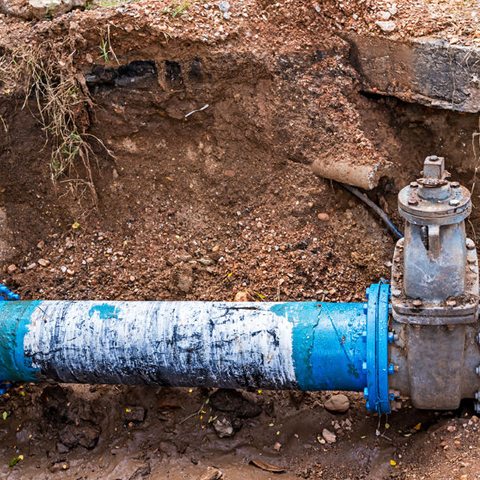Spotting and Quickly Fixing a Leaking Pipe: Step-by-Step
Spotting and Quickly Fixing a Leaking Pipe: Step-by-Step
Blog Article
We have come across this great article involving How to Prepare for Your Dishwasher Installation directly below on the web and felt it made good sense to relate it with you in this article.

A burst pipeline is a major emergency; you can only stand as you view water you pay a lot to reunite with the planet. In worse instances, you discover a swimming pool on your kitchen area floor, which is a great trip threat, particularly if you have youngsters around. If the pipe that ruptured remained in your walls, trouble: you may require to repaint that whole section.
Just how can a catastrophe like a burst pipeline be stopped as well as handled? Well, by listening to your professional emergency plumbing professionals and also complying with these guidelines.
How do I know when my pipelines have burst?
Changing water pressures
Pipes do not simply burst in a day. You might have discovered that your cooking area tap or shower does not run instantly when you turn the tap. It might pause for a few seconds and after that blast you with even more force than typical.
In various other circumstances, the water might seem normal initially, after that decrease in pressure after a couple of seconds.
Damp wall surfaces and water spots
Prior to a pipe bursts, it will certainly leakage, many times. If this consistent dripping goes undetected, the leakage might finish right into a wide gouge in your pipeline. One easy way to avoid this emergency is to keep an eye out for wet wall surfaces ad water spots. These water stains will lead you right to the leakage.
Puddles under pipelines and also sinks
When a pipeline ruptureds, the discharge creates a pool. It might show up that the pool is expanding in dimension, and also despite the amount of times you wipe the pool, in a couple of mins, there's one more one waiting to be cleaned up. Usually, you may not have the ability to map the pool to any kind of visible pipelines. This is a sign to call a professional plumber.
Untraceable dripping noises
Pipeline bursts can occur in the most unpleasant locations, like within concrete, inside wall surfaces, or under sinks. When your house goes quiet, you may have the ability to listen to an irritatingly consistent leaking noise. Also after you have actually checked your shower head and kitchen faucet, the trickling may proceed.
Beloved viewers, the leaking may be coming from a pipe inside your wall surfaces. There isn't much you can do regarding that, other than inform a professional plumber.
Turn off the Water
When water freezes, it increases in volume by concerning 9 percent. As well as it expands with remarkable pressure: The pressure inside pipelines may go from 40 extra pounds per square inch to 40,000 psi! No pipeline can hold that much pressure, so it bursts. The break may occur where the ice forms, yet regularly, it happens where water pressure locates a vulnerable point in the pipe. That might be inches or even feet from the icy area. Discover the water shutoff valve and switch off the water to prevent even more damage. You could likewise need to shut down the electrical power as well, relying on where the leaks takes place as well as how huge it is.
Contaminated water
Many individuals assume a ruptured pipe is a one-way electrical outlet. Rather the contrary. As water flows out of the hole or tear in your plumbing system, contaminants locate their way in.
Your water might be contaminated from the resource, so if you can, examine if your water container has any troubles. However, if your alcohol consumption water is supplied as well as detoxified by the city government, you need to call your plumber instantly if you see or scent anything funny in your water.
What do I do when I detect a burst pipe?
Your water meter will certainly continue to run even while your water wastes. To minimize your losses, discover the major controls and transform the supply off. The water pipe are an above-ground structure beside your property.
How to Fix & Detect a Leaking Pipe
How Do I Know if a Pipe is Leaking?
Leak detection tests can help you determine if your pipe has a leak. Even if you don’t see an apparent leak, you should still conduct leak detection tests regularly to save water and money—and prevent major damage to your home.
Water meter. It can be helpful to figure out what your usual water meter usage numbers are and then monitor them regularly. To monitor your meter, first, turn off all water faucets in your home. Check the meter and write down the numbers. In a few hours, check the meter again. If the numbers have changed, you have a leak. Water gauge. Use a water gauge to test your water pressure. Your showerhead should produce a certain amount of water pressure based on its model and design. If the pressure is lower than it is supposed to be for that specific showerhead, your home likely has a leak. Puddles. Look inside your bathroom, laundry, and kitchen sink cabinets. Puddles around the cabinets or around toilets, tubs, showers, and washing machines indicate the presence of a leaking pipe. You may also notice loose tiles, peeling or flaking paint, or mold caused by water accumulation. Napkin test. Even if you don’t see any puddles, you may still have a leak. You can test for water leaks in the bathroom, laundry, and kitchen by wiping below-sink connections with a napkin, paper towel, or piece of toilet paper. If it becomes damp, you probably have a leaking pipe under the sink. Discolored walls. Walls that are discolored—usually with brown or yellow stains—or bulging might mean that they have been impacted by water damage caused by a leaking pipe. Smell. A leaky pipe will create sitting water, and over time, that water may develop a musty smell. If your home smells musty, but you can’t locate the source, it may be due to a leak. Steps for Fixing a Leaking Pipe
A leaky drain can be remedied by tightening the pipe base, replacing the drain seal, caulking the rim, and tightening the pipe nut. Similarly, a leaking toilet pipe can be treated by tightening the packing nut. You may also need to replace the valve. A leaky faucet may just need tightening or replacement of the washers. If that doesn’t work, consider replacing your faucet. If your pipe has a hole in it, you may want to use a pipe leak sealer or pipe leak tape. This quick fix for water pipe leaks can also temporarily fix a copper pipe leak. https://www.ahs.com/home-matters/quick-tips/how-to-tell-if-pipes-are-leaking/

Do you like more info about How to Prepare for Your Dishwasher Installation? Leave feedback below. We'd be interested to know your opinions about this page. In hopes to see you back again in the near future. Do you know someone else who is intrigued by the subject? Why not share it. We enjoy reading our article about How to install a dishwasher safely.
Burst pipes? Get immediate help. Report this page